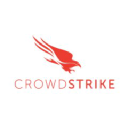Will Higher Federal Government Spending, Gen AI Drive Digital Security Stocks Like CrowdStrike Higher?
Our theme of Cyber Security Stocks , which includes the likes of CrowdStrike (NASDAQ:CRWD) has gained about 11% this year, performing slightly better than the broader Nasdaq-100, which remains up by around 8% over the same period. While the broader tech indices have benefited from enthusiasm surrounding generative artificial intelligence, cybersecurity stocks are also seeing a couple of tailwinds. As the world becomes more reliant on interconnected computer systems, cyber attacks can disrupt economic activity, sabotage critical infrastructure, and compromise countries’ security. This is making digital security a more important investment priority for governments and businesses. Russia could potentially carry out more cyber attacks on Western targets as its military offensive in Ukraine faces challenges. Moreover, cybersecurity and ransomware attacks have also risen over the past year, with major attacks including the ransomware attack on Dish Networks and Boeing. This should translate into a stable demand for cyber security. Moreover, the federal government is expected to spend more on cybersecurity going forward. Per the White House’s fiscal 2025 budget overview released last week, the government is looking toward $13 billion in spending for 2025 for cybersecurity, up from $11.8 billion earmarked for civilian agency cybersecurity spending in 2024 and the $11.3 billion spent in 2023.
Looking at a slightly longer period, CRWD stock has seen extremely strong gains of 50% from levels of $210 in early January 2021 to around $315 now, vs. an increase of about 35% for the S&P 500 over this roughly 3-year period. However, the increase in CRWD stock has been far from consistent. Returns for the stock were -3% in 2021, -49% in 2022, and 142% in 2023. In comparison, returns for the S&P 500 have been 27% in 2021, -19% in 2022, and 24% in 2023 – indicating that CRWD underperformed the S&P in 2021 and 2022.
In fact, consistently beating the S&P 500 – in good times and bad – has been difficult over recent years for individual stocks; for heavyweights in the Information Technology sector including MSFT, AAPL, and NVDA, and even for the megacap stars GOOG, TSLA, and AMZN.
In contrast, the Trefis High Quality (HQ) Portfolio, with a collection of 30 stocks, has outperformed the S&P 500 each year over the same period. Why is that? As a group, HQ Portfolio stocks provided better returns with less risk versus the benchmark index; less of a roller-coaster ride as evident in HQ Portfolio performance metrics. Given the current uncertain macroeconomic environment with high oil prices and elevated interest rates, could CRWD and other security stocks face a similar situation as it did in 2021 and 2022 and underperform the S&P over the next 12 months – or will it see a strong jump?
There appears to be a long growth runway for the cybersecurity theme. Research firm Gartner predicted that enterprise information security spending will stand at an estimated $186 billion in 2023 and will grow to $278 billion by 2027. This translates into an 11% compound annual growth rate. That said, competition has been mounting in the cybersecurity space, with big tech players such as Microsoft doubling down on offering generative AI-backed security tools for their cloud operations. Moreover, smaller cloud-based security players are also gaining traction. As the security space gets more crowded, it’s possible that we could see price wars and margin pressure. Within our theme, Qualys (NASDAQ:QLYS) has been one of the weaker performers, with it down by 13% year-to-date in 2024. On the other side, CrowdStrike has been the strongest performer, with its stock up by over 24% thus far this year.
| Returns | Mar 2024 MTD [1] |
2024 YTD [1] |
2017-24 Total [2] |
| CRWD Return | -3% | 24% | 533% |
| S&P 500 Return | 0% | 7% | 129% |
| Trefis Reinforced Value Portfolio | -2% | 2% | 626% |
[1] Returns as of 3/18/2024
[2] Cumulative total returns since the end of 2016
Invest with Trefis Market-Beating Portfolios
